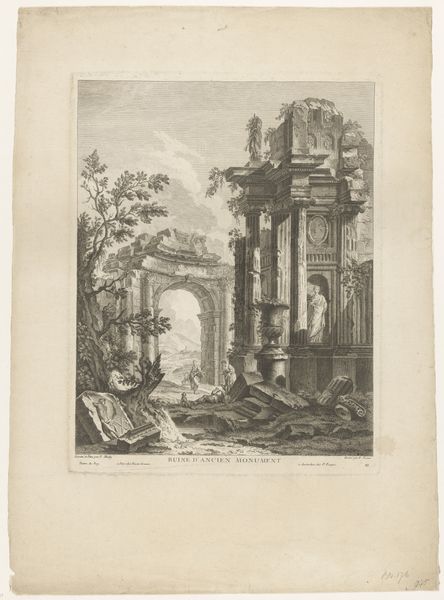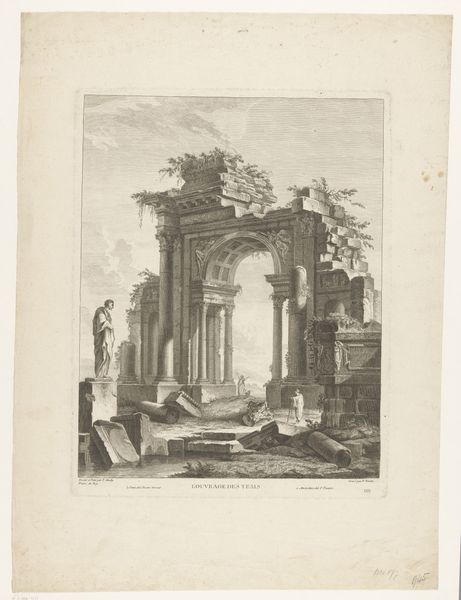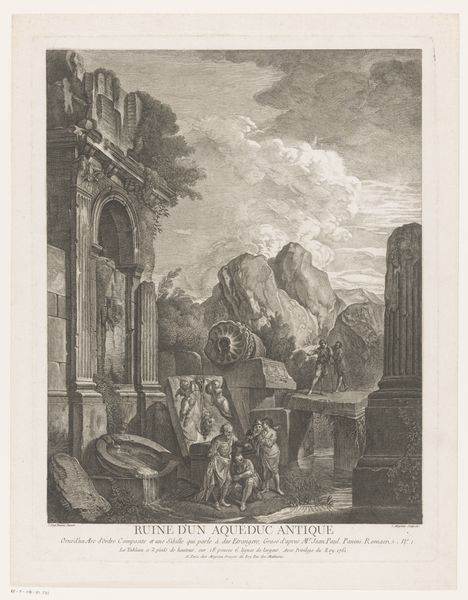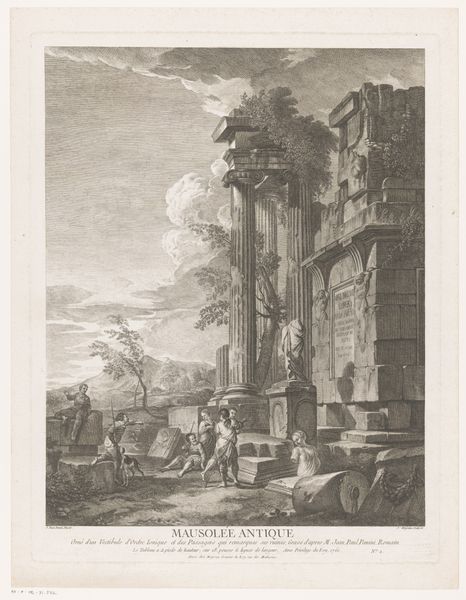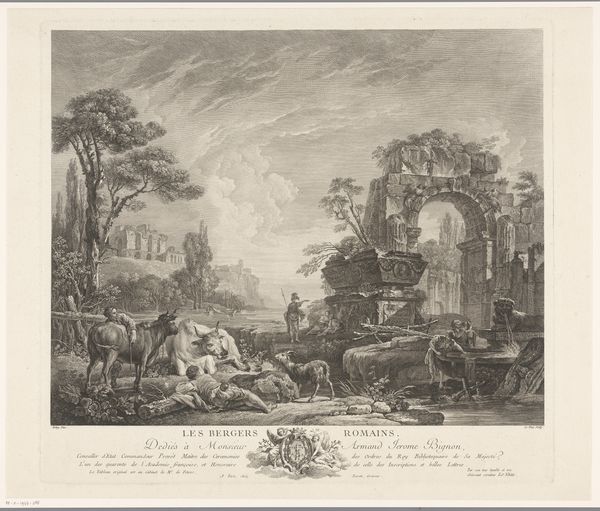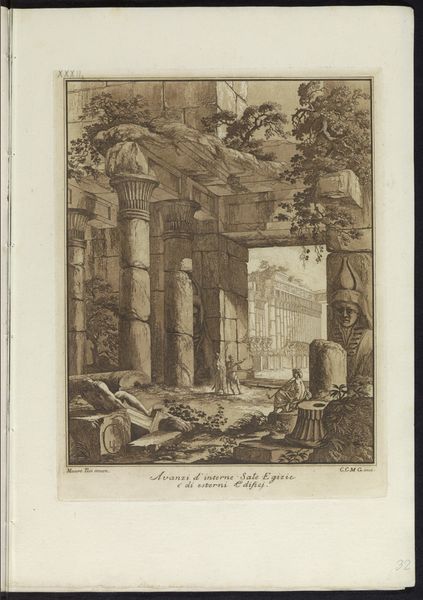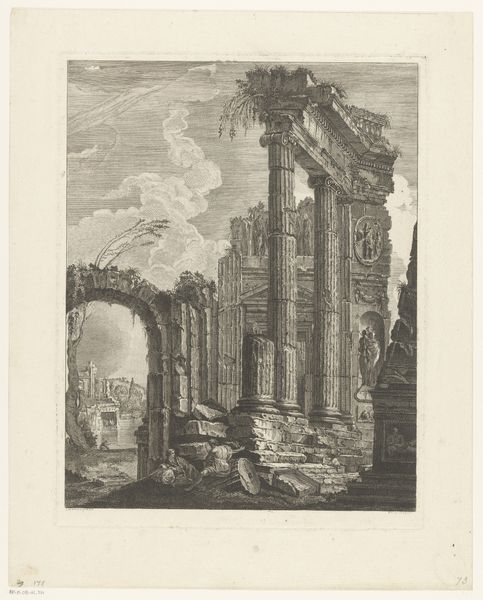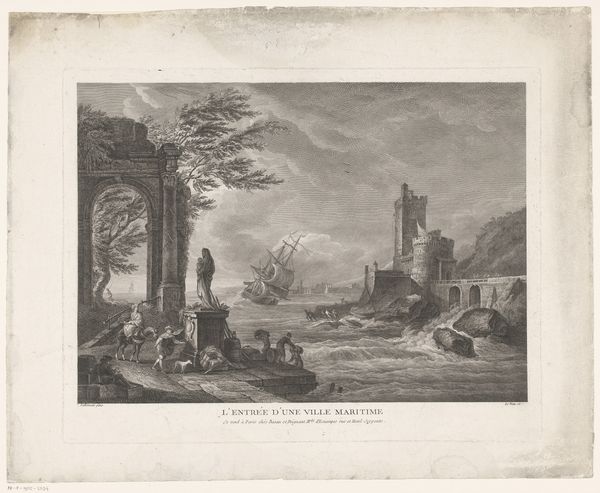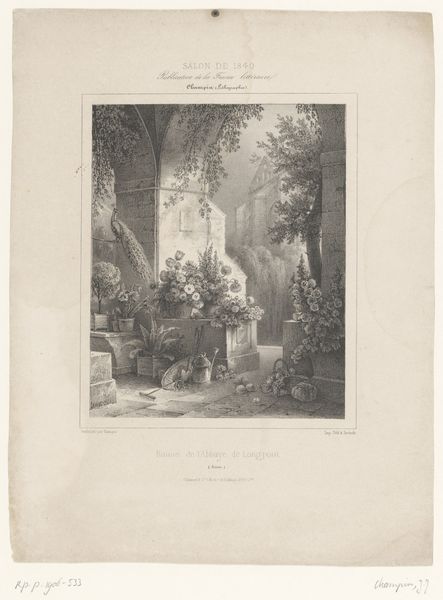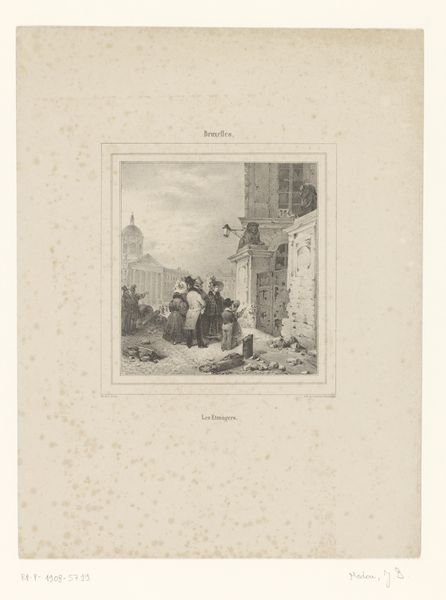
Dimensions: height 188 mm, width 140 mm
Copyright: Rijks Museum: Open Domain
Curator: What a striking composition! There is an immediate sense of decay meeting rustic life in Charles Courtry’s print from 1881, entitled "Jongen na de jacht." Editor: It’s a study in contrasts, certainly. The formal ruins rendered with such detailed lines meet a messy foreground of what seems to be the spoils of a hunt. And it is monochromatic intaglio—etching and engraving. Curator: Observe how this intaglio relies on potent visual tropes—the heroic past crumbling juxtaposed against genre scenes, creating an elegy to both classical virtues and the changing social landscape. The hunting spoils represent this cultural shift; it represents that this boy is growing and moving forward from what used to be. Editor: The light here, however, seems unbalanced; falling too harshly on the architectural fragment and washing out its form somewhat. The contrast does sharpen its monumental aspects but, at the expense of texture. Do you think it perhaps makes too strong a binary statement? Curator: It draws a very definitive symbolic separation in social change and perhaps nods to some neo-classical leanings in it's starkness. See the iconography of the ruined temple, signaling the inevitable decline of past ideals amidst emergent socio-political narratives that the hunting could reflect. Courtry highlights how new economies eclipse antiquated legacies by using strong symbolic imagery and juxtapositioning it together to reflect this time in society. Editor: So, for you, the work’s appeal rests largely in its symbolism? While the engraving is clearly skillful, its use here feels almost too conventional to me; too tied to the prevailing academic aesthetic to really allow for interpretive freedom. I am, however, stuck on it now in trying to pick apart the intended versus received narratives through this imagery. Curator: In that sense it makes the familiar unsettling. The technique makes its symbolism lasting, the print immortalizes not only its literal imagery, but the moment it encapsulates to the viewer. It's thought provoking, after all. Editor: Indeed. One finds oneself questioning not only its inherent statement but our own presumptions.
Comments
No comments
Be the first to comment and join the conversation on the ultimate creative platform.
